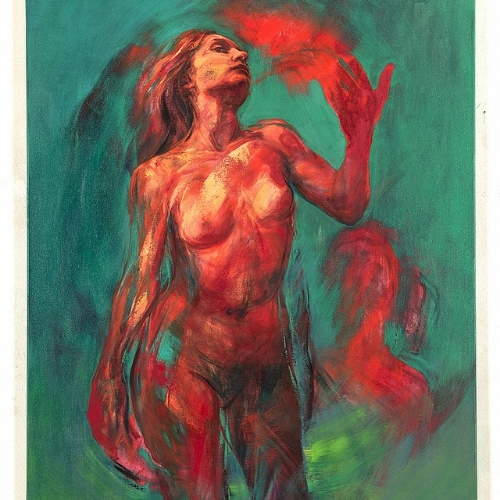Sarah Ballam

Colour startles in the new work. Dynamic, even confrontational, these paintings challenge our commonplace expectations of colour and shape. Local colour – the colour an object “owns” – has been replaced with saturated colour, more rooted in intuition than observation. Although embedded in the figurative, these works lean into more abstract realms. The tension between form and dissolution, between the need to structure composition and render dissipation, is what draws us in and holds our attention. Ballam references celebratory images of women by great modernists – Matisse’s dancers and Picasso’s women running on the beach. These are reworkings of artists who are key pillars of the male modernist canon. Are the Ballam paintings a homage, a challenge, or both? The roots in art history go back further, into classical friezes of Antiquity and their traditional themes like the Three Graces. Ballam’s entranced figures recall to mind the Pompeian mystery cults of which only fragments of murals remain. The American art critic Harold Rosenberg famously stated that “… the canvas is an arena in which to act.” Large canvases make unusual physical demands on a painter. The large canvas is likely to be the recipient of bolder, emphatic gestures, trapping and holding the energy and emotion of a painter. Ballam’s paintings are arrived at through a succession of applications, broad swathes laid in with large brushes and palette knives, then drawn into with incisive fluid line. Each painting is the result of a perilous voyage, a tightrope walk into the unknown that requires considerable poise. And counterpoise.
Read More







